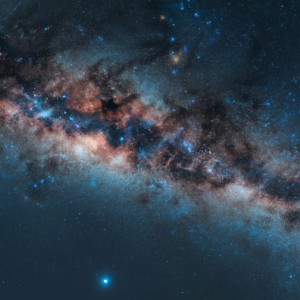Possible article:
Where Do Signals from Space Come From?

Since the discovery of radio waves in the late 19th century, humans have been sending and receiving signals through the airwaves, both intentionally and unintentionally. With the advent of radio astronomy in the mid-20th century, we have also been exploring the universe through its natural radio emissions, which reveal the structures, dynamics, and origins of celestial objects and phenomena. However, one of the most intriguing aspects of radio astronomy is the detection of signals or pulses that seem to come from beyond the known sources of radiation, leading to the question of where they come from and what they mean. In this article, we will explore some of the possible answers to this question, which is still one of the most active and exciting areas of research in astrophysics.
First of all, we need to clarify what we mean by "signals from space". In general, radio signals are electromagnetic waves that have a specific frequency or wavelength, and that can be detected by a radio receiver tuned to that frequency. In radio astronomy, the signals we are interested in are usually in the range of a few megahertz to several gigahertz, and they can be either continuous or intermittent, depending on the source and the mode of observation. Some of the known sources of radio signals in space are:
- Stars: Almost all stars emit radio waves to some extent, due to various physical processes such as magnetic fields, winds, or accretion. However, the intensity and spectrum of the radio emission can vary widely depending on the type and age of the star, as well as its environment. For example, red giants and supergiants may have strong and complex radio emission due to their extended and dynamic atmospheres, while young and active stars may produce bursts of radio waves related to flares or coronal mass ejections.
- Planets: Some planets can also generate radio emissions, usually through interactions between their magnetic fields and the solar wind or other charged particles. For example, Jupiter is a powerful radio source that emits intense bursts of radiation from its magnetosphere, which can be heard as radio storms or whistlers. Other planets such as Saturn, Uranus, and Neptune also emit radio emissions, but with lower intensity and different characteristics.
- Cosmic objects: Besides stars and planets, there are many other types of celestial objects that can produce radio signals, such as galaxies, black holes, pulsars, quasars, and supernovae. Each of these objects has its own unique signature of radio emission, which can provide clues to its nature and behavior. For example, pulsars are highly magnetized and rapidly rotating neutron stars that emit regular and precise pulses of radio waves, which can be used as clocks for testing fundamental physics.
- Human-made sources: Finally, there are many signals from space that are actually created by human activities, such as satellites, spacecraft, or radio transmitters. These signals can interfere with astronomical observations and need to be carefully identified and filtered out. However, there are also some intentional signals sent into space as messages or probes, such as the Pioneer and Voyager missions, which may be detected by extraterrestrial civilizations or future astronomers.
Having listed some of the common sources of radio signals in space, we can now turn to the more mysterious and interesting signals that have been discovered in the past few decades, and that are still not fully understood. Some of these signals are:
- Fast Radio Bursts (FRBs): These are intense and brief pulses of radio waves that last only a few milliseconds, but contain as much energy as the sun emits in a day. The first FRB was detected in 2007, and since then over 100 such events have been observed, mostly from distant galaxies. The origin of FRBs is still unknown, but some possible explanations include neutron star mergers, magnetars, or alien civilizations.
- Radio Emissions from Exoplanets: Although no direct images of exoplanets have been obtained so far, some scientists have claimed to detect radio signals from them. These signals could be produced by either natural or artificial processes, such as auroras, lightning, or transmissions from extraterrestrial societies. However, the validity and interpretation of these claims are still controversial.
- Technosignatures: These are signals that are specifically designed or produced by intelligent beings, and that could be detected by other civilizations or us. Examples of technosignatures include beacon signals, interstellar messages, or artificial structures. While no confirmed technosignature has been found so far, some researchers are actively searching for them using radio telescopes, optical telescopes, or spacecraft.
In conclusion, the question of where signals from space come from is a complex and fascinating one, with both known and unknown answers. Through continuous observation, analysis, and innovation, we can hope to unravel more of the mysteries of the universe and perhaps even discover new forms of communication or life beyond our planet.













评论